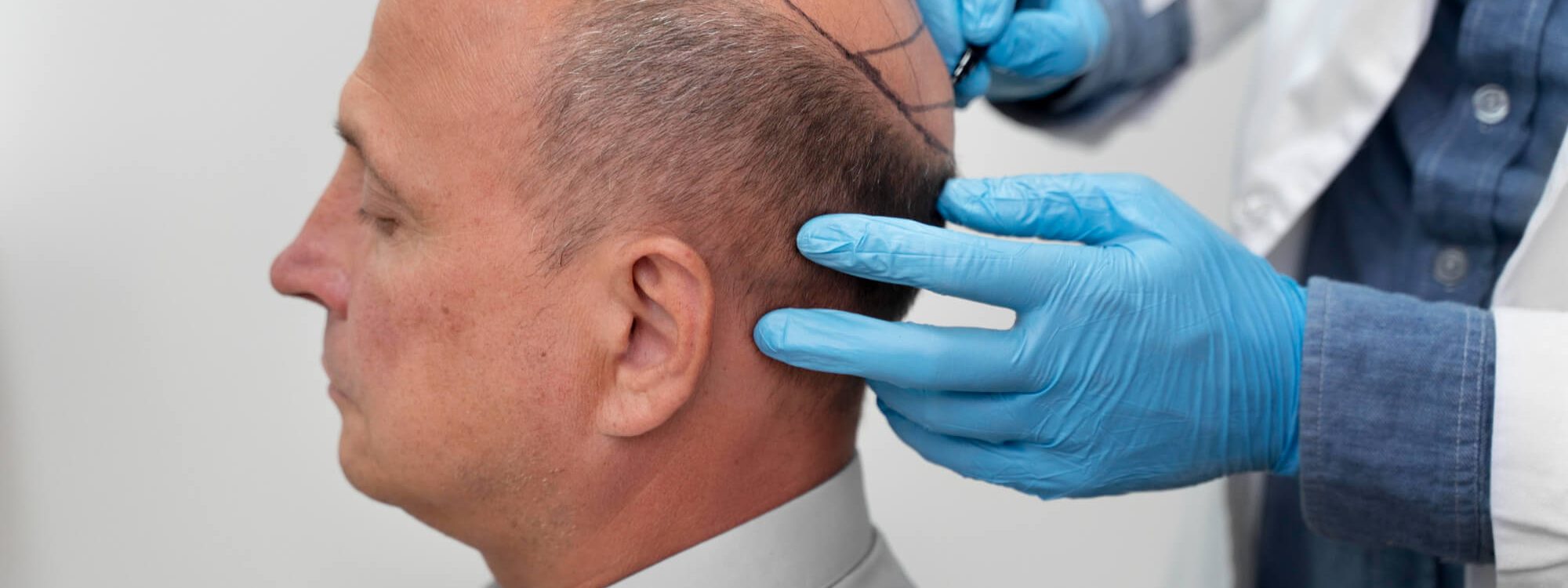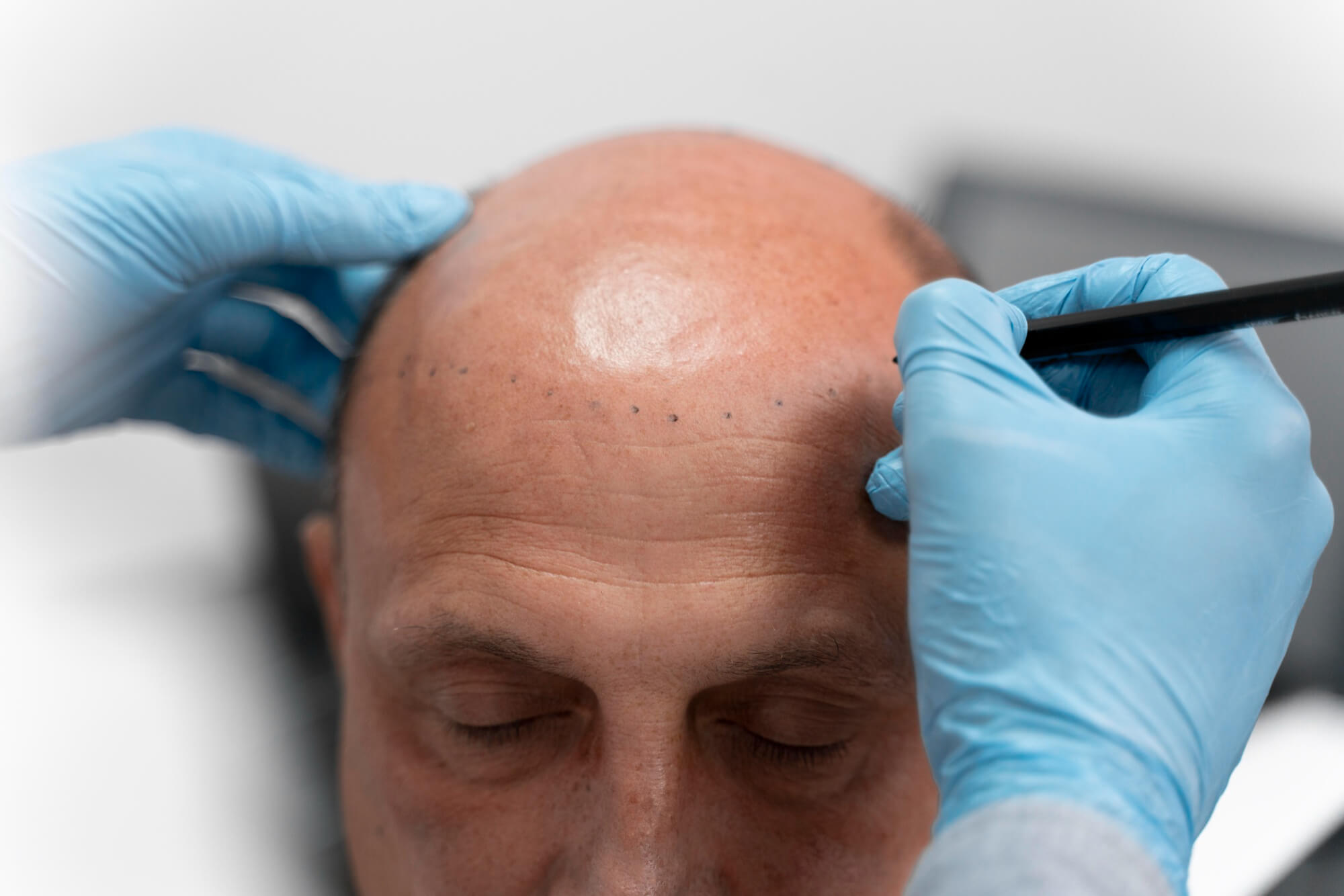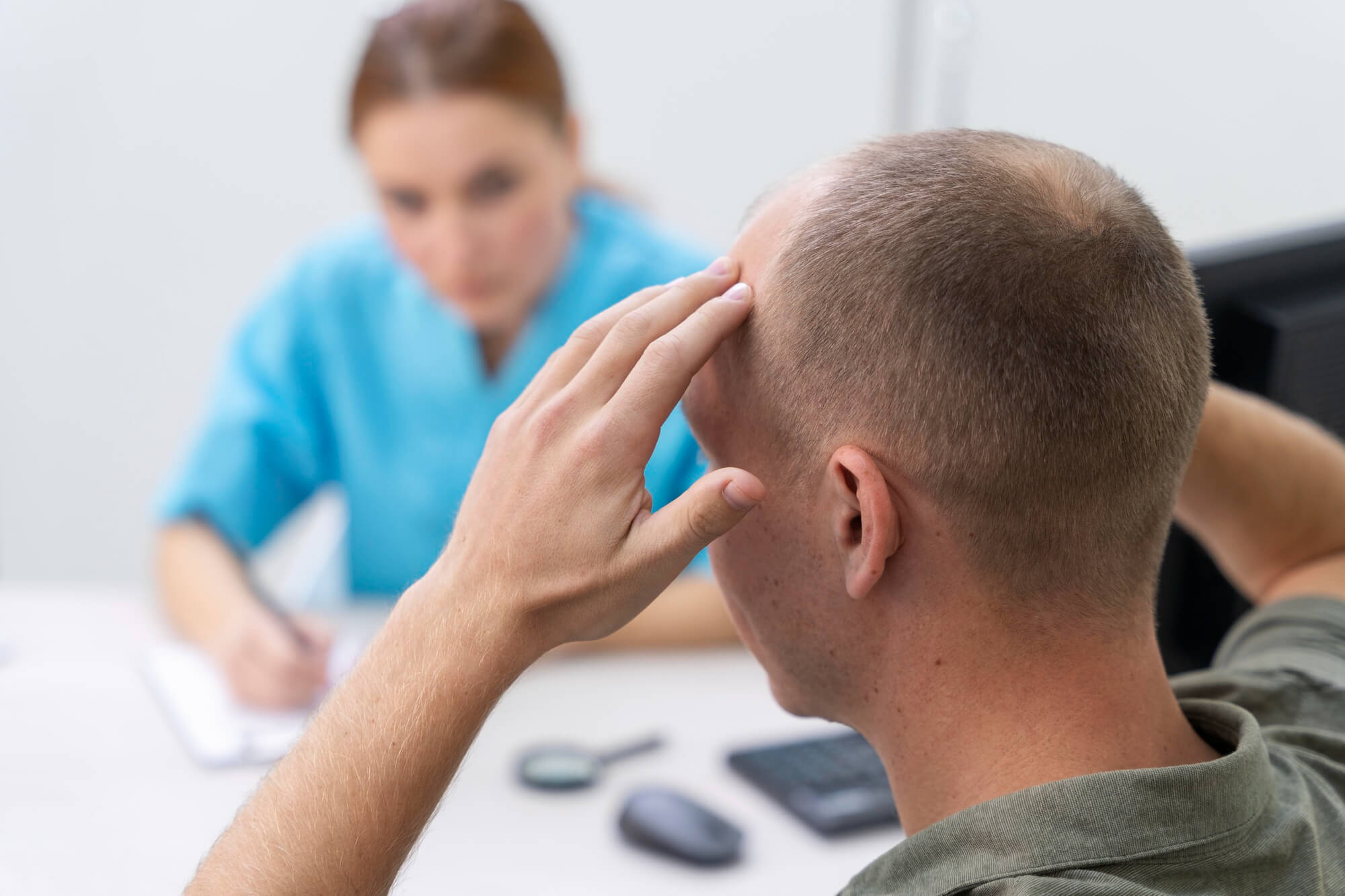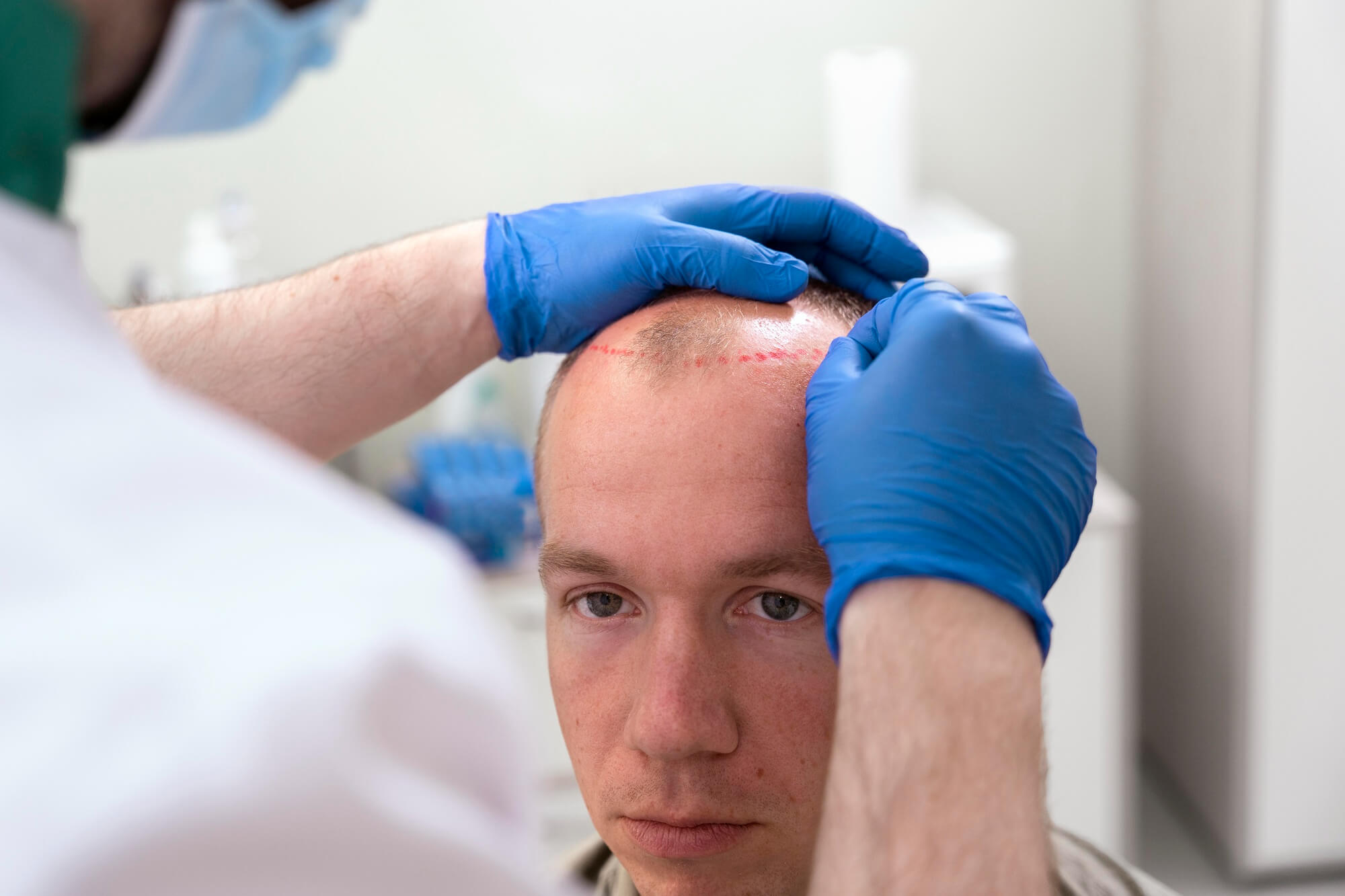Bald Spot on Crown: How to Treat it

Identifying Causes, Effects, and Treatments
Millions of men and women worldwide suffer from hair loss, particularly the bald spot on the crown. It can be a traumatic experience that affects one’s self-esteem and overall quality of life. This article will thoroughly review balding at the crown, including its causes, effects, and treatment options.
Recognizing Crown Balding
Balding at the crown, also known as crown balding, is a type of hair loss that begins at the top of the scalp, more specifically at the crown of the head. Thinning crowns are more common in men but can also be an issue for some women. Crown baldness is a form of androgenetic alopecia, a hereditary hair loss disorder that affects both men and women.
What Is the Cause of Crown Hair Loss?
A variety of factors can cause a balding crown. Genetics, aging, hormonal imbalances, stress, poor diet, and medical conditions such as alopecia areata and telogen effluvium are among them. Understanding the causes of crown hair loss is the first step in determining the best treatment.
Crown Balding Symptoms and Progression
The first signs of crown balding can be subtle. It begins with a thinning crown, with the hair at the crown of the head becoming sparser over time. The hair strands are thin and shorten over time, resulting in a visible bald spot on the crown.
If left untreated, the bald spot will gradually enlarge, eventually leading to total baldness. Early detection of these symptoms is critical because prompt intervention can slow the progression of crown balding.
Managing Crown Hair Loss
Faced with a balding crown, the psychological impact should be considered. Feeling upset or concerned about your crowning hair loss is normal. But it’s also important to understand that balding at the crown is a common problem that can be managed with various effective treatments.
Treatments for Bald Spot on Crown
A bald spot on the crown of the head can be treated with various methods, ranging from medication to surgical procedures. Topical treatments such as minoxidil can stimulate hair growth in the balding area. In contrast, oral medications such as finasteride can block the production of hormones that cause hair loss.
The best way to get rid of a balding head is to use a hair transplant. At Smile Hair Clinic, we specialize in delivering exceptional results through our hair transplant procedures, restoring your hair and confidence.

How to Prevent Crown Hair Loss
While you cannot change your genetic proclivity for crown balding, you can take steps to prevent further hair loss. Maintaining a healthy diet, managing stress, and avoiding harsh hair treatments are among them.
Understanding the bald spot on the crown, its causes, effects, and treatment options can help you deal with this issue. At Smile Hair Clinic, we are committed to providing viable solutions to manage crown balding because we understand the emotional impact of hair loss. While a balding crown can be intimidating, remember that you are not alone, and effective treatments are available.
A bald spot on your crown does not have to be a permanent condition with the help of our expert team and advancements in hair restoration procedures. Contact us today to begin your journey to reclaiming your crowning glory.
Deeper Insight into Crown Balding Causes
As stated before, several factors can cause crown baldness. Genetics is extremely important. If balding at the crown runs in your family, you are more likely to develop the condition. It is a genetic condition that is passed down from generation to generation.
Hormonal imbalances can also cause a bald spot on the crown. Overproduction of dihydrotestosterone (DHT), a byproduct of testosterone, can cause hair follicles to shrink, resulting in thinner, shorter hair strands and, eventually, a thinning crown. In women, conditions such as polycystic ovary syndrome (PCOS) can cause hormonal imbalances that result in hair loss.
Our bodies undergo numerous changes as we age, and hair is no exception. As we age, hair growth slows, and strands become finer, causing crown balding. The term “crown hair” refers to hair used to describe a situation.
Finally, alopecia areata, an autoimmune disorder, and telogen effluvium, a temporary hair loss condition often associated with stress, can cause hair loss at the crown of the head.
Understanding the Crown Balding Technique
The process of obtaining crown balding is gradual, with the majority of the time spent in the process. The thinning of hair at the crown is the first sign of balding at the crown, which may go unnoticed in the early stages. The thinning crown eventually develops into a visible bald spot. This bald spot on the crown grows over time, eventually leading to a pronounced bald area at the top of the head.
Some people may experience a faster progression of crown hair loss than others. The thinning of your crown hair will depend on various factors, including genetics and overall health.
The Effects of Crown Baldness on Self-Image
Hair loss at the crown of the head can significantly impact one’s self-image and confidence. Hair is often associated with beauty and youth, while hair loss can make you feel like you are losing a piece of yourself. Crown baldness can cause feelings of insecurity and concern. It is critical to acknowledge these feelings and seek help when necessary.
Remember that a balding crown is a common problem that should not be ashamed of. Many people are going through the same thing, and many more have discovered effective solutions for their hair loss.

Navigating Crown Hair Loss: Treatment Options
A bald spot on the crown can be treated in a variety of ways. Non-surgical treatments such as minoxidil, a topical solution, and finasteride, an oral medication, can help slow baldness and stimulate hair growth. However, their effectiveness varies from person to person, and they frequently require ongoing use to maintain the benefits.
Hair transplantation is a surgical procedure that offers a more long-term solution to a balding crown. This procedure involves transplanting hair from a donor area to the balding crown, restoring hair density and appearance.
We provide cutting-edge hair transplant techniques at Smile Hair Clinic to effectively address a bald spot on the crown. Our team of experts designs customized treatment plans that cater to your unique needs and expectations.
Crown Hair Loss Prevention Measures
Prevention is always preferable to cure. While it’s not possible to prevent hereditary hair loss, you can delay its onset and slow down its progression. A balanced diet containing vital vitamins and minerals is crucial for promoting healthy hair growth. Regular exercise can help regulate hormone levels and reduce stress, common causes of crown hair loss. Avoiding harsh hair treatments and products can also help to keep your hair in good condition.
A bald spot on the crown does not have to be permanent. While it can be upsetting, some treatments can restore your hair and confidence. At Smile Hair Clinic, our commitment is to provide you with the best hair restoration services. Contact us today, and let us assist you in regaining your crowning glory.
The Psychological Aspects of a Bald Spot Embracing the Crowning Hair
A bald spot, particularly at the crown of the head, can impact more than just your physical appearance. It can have a significant psychological impact, affecting self-esteem, confidence, and overall mental health. Awareness of these emotional aspects is critical in your journey to reclaiming your crowning hair and self-confidence. It’s important to remember that many people worldwide are going through similar things, and help is available.
The Crown of the Head: The Prime Location
When people look at you from the back or a higher point, they frequently see the crown of the head, the highest point of the scalp. As a result, a bald spot in this area can be especially noticeable and embarrassing. A thinning crown or bald spot at the crown of the head can significantly alter your appearance and make you feel self-conscious. Psychological distress can result from being aware of the bald spot, its visibility, and how others may perceive it.
Therapeutic Methods for Treating Bald Spot
A healthy lifestyle, in addition to medical treatments, can help to improve the health of your crowning hair. Regular physical activity, a well-balanced diet, adequate hydration, and adequate sleep are all crucial factors in maintaining the health of your scalp and hair. Stress management techniques such as meditation, deep breathing, and yoga can also help to reduce stress-related hair loss.
Hair Transplantation for a Bald Spot on the Crown of the Head
Hair transplantation is a permanent treatment option if you have a bald spot at the crown of head. This procedure can significantly improve the appearance of your crowning hair, making it fuller and healthier. Hair is extracted from a donor site, usually the back of the scalp, and transplanted to the bald spot. The transplanted hair follicles grow in the new location, eventually filling the bald spot on the crown of the head.
We have years of experience performing hair transplant procedures at Smile Hair Clinic. Our dedicated team of experts employs cutting-edge techniques to provide our patients with personalized solutions.

Post-transplant Care for Your Crowning Hair
It is critical to care for your newly transplanted crowning hair after the hair transplantation procedure. To promote healthy hair growth, avoid direct sun exposure on the crown of your head, follow the provided aftercare instructions, and take any prescribed medication on a regular basis.
Regaining Confidence and Improving Quality of Life
While a bald spot on the crown of the head can impact your self-esteem and confidence, keep in mind that you have options. You can restore your crowning hair, regain confidence, and improve your quality of life with the right treatments and care.
Smile Hair Clinic is committed to providing effective hair restoration solutions. Whether you have a thinning crown or a more noticeable bald spot, our team of experts is here to assist you. Contact us today, and let us guide you through restoring your crowning hair.
Is It Normal to Have a Bald Spot on Your Crown?
“Is it normal to have a bald spot on your crown?” is a question that many individuals grapple with, especially when first noticing thinning or balding areas. It’s not uncommon for both men and women to experience some degree of hair loss as they age. For many men, the crown is one of the first areas where this thinning becomes noticeable. This pattern, often linked to male pattern baldness or androgenic alopecia, is influenced by genetics and age. While it’s considered normal for many, the appearance of a bald spot can still be a source of anxiety and concern.
Women, too, can ask, “Is it normal to have a bald spot on your crown?” Female pattern baldness, although less discussed, can also manifest with thinning at the crown. However, other factors, such as hormonal changes, stress, medical conditions, or certain medications, can also contribute to hair loss in this area. For anyone noticing a bald spot or significant thinning on their crown, it’s crucial to consult with a dermatologist or trichologist. They can offer insights into the root cause, potential treatments, and reassurance about the normalcy or otherwise of the situation.
Instagram: smilehairclinic
 Whatsapp
Whatsapp
